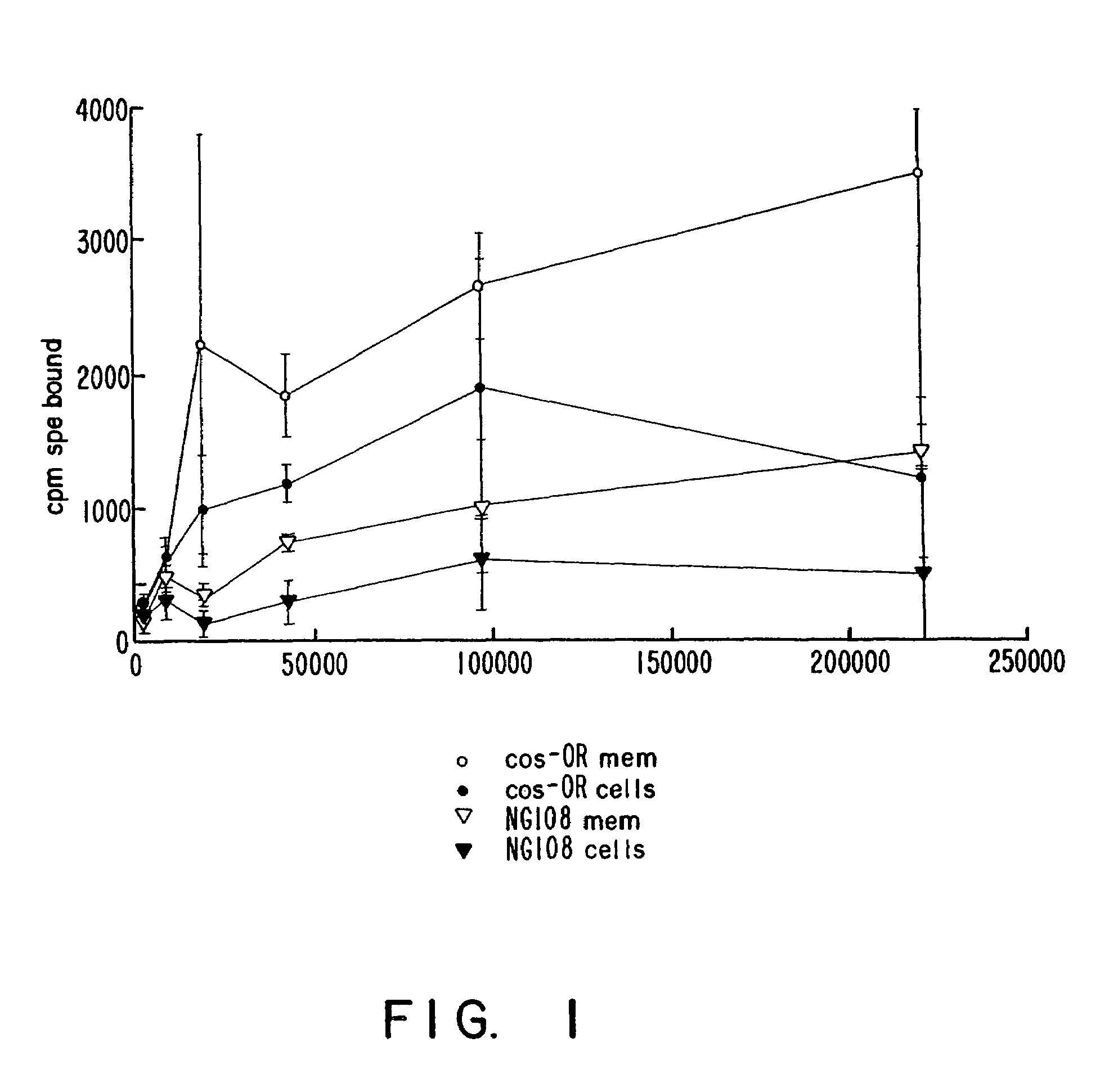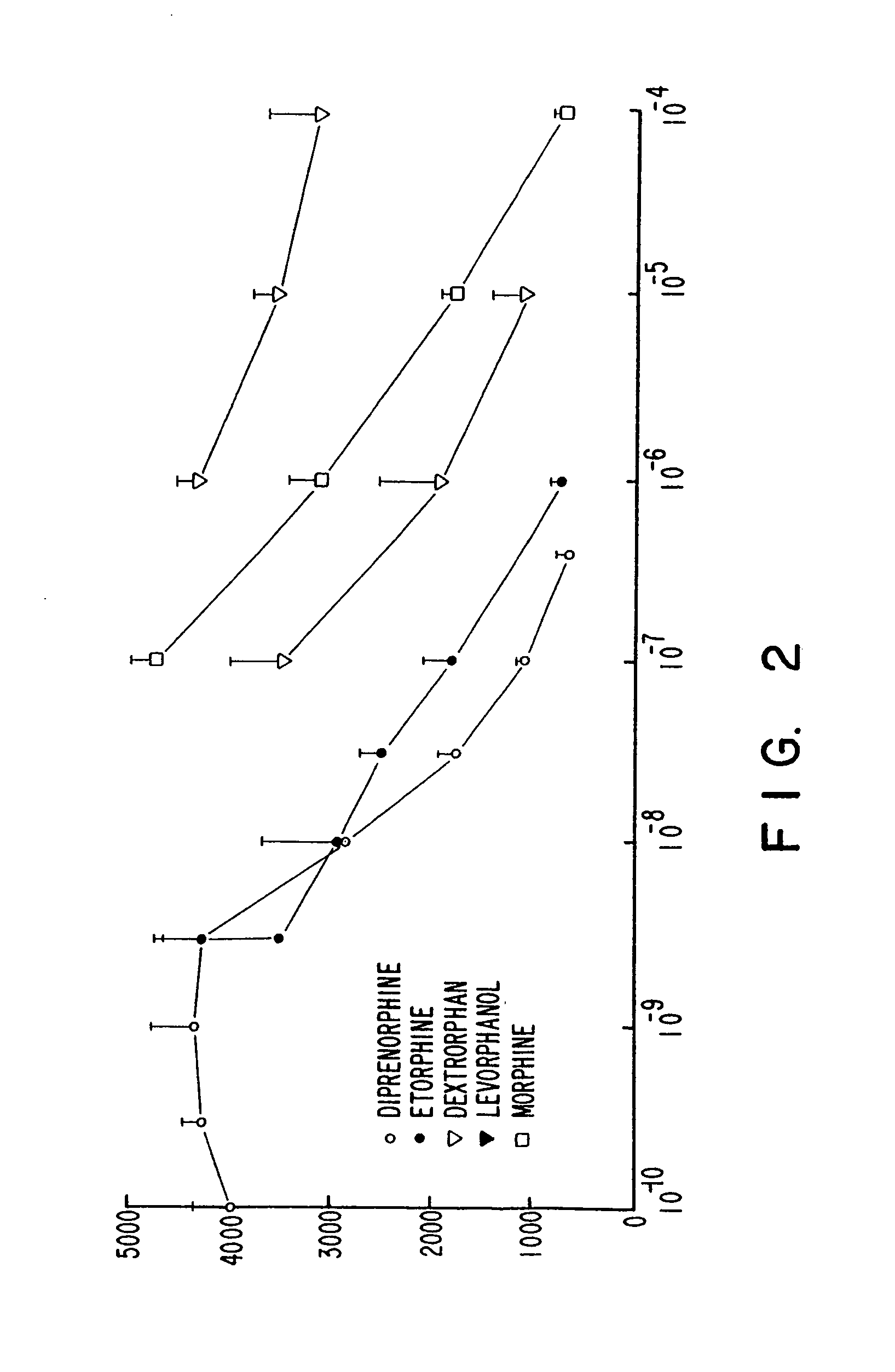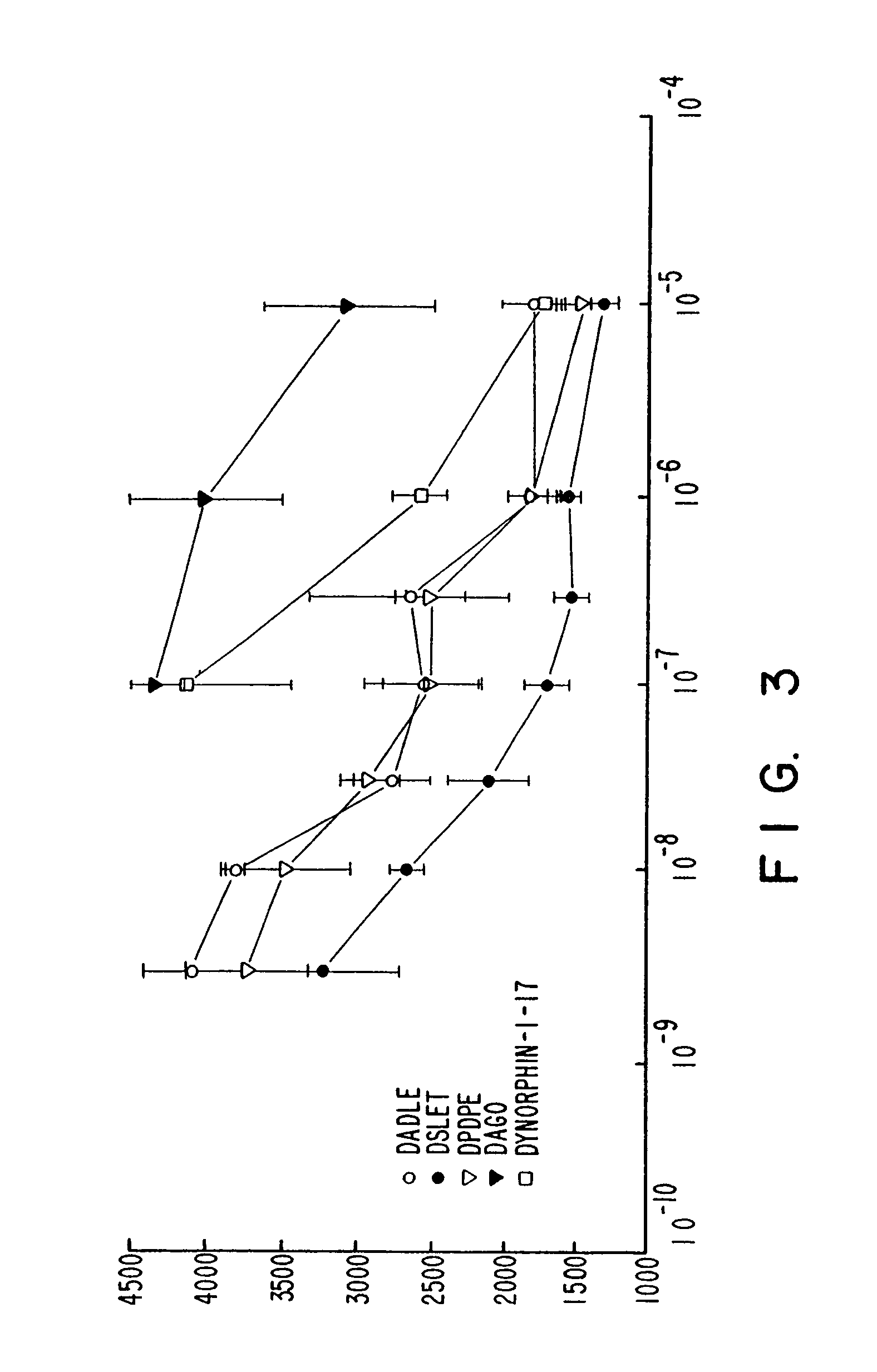Opioid receptors and methods of use
a technology of receptors and opioids, applied in the field of opioid receptors and receptorlike proteins, can solve the problems of difficulty in mentation, inability to concentrate, and experience not always pleasant,
- Summary
- Abstract
- Description
- Claims
- Application Information
AI Technical Summary
Benefits of technology
Problems solved by technology
Method used
Image
Examples
example 1
Preparation of DOR-1
[0123]The NG108-15 cell line (available from Dr. Christopher Evans, UCLA) comprises a homogeneous and enriched source of delta opioid receptors. Utilizing mRNA isolated from NG108-15, a random-primed, size-selected cDNA library was constructed in plasmid vector CDM8. The cDNA library was amplified in bacteria. The cDNA library was transfected into COS-7 cells by electroporation. Transiently transfected COS lawns were screened and selected with highly purified mono-125I-2dAla, 5dLeu enkephalin (125I-DADLE). Positive clones were identified by film autoradiography, and plasmids from these cells were recovered and amplified in bacteria. Thereafter, the plasmids were re-transfected into COS cells. Following three cycles of such plasmid enrichment, individual clones were transfected and a pure clone was identified that bound 125I-DADLE.
A. Construction of the cDNA Library
[0124]RNA was prepared from NG108-15 cells by homogenization in 6 M guanidinium isothiocyanate, foll...
example 2
Characterization of DOR-1
[0128]The DOR-1 clone initially was characterized by screening cell membrane fractions, from cells expressing DOR-1, with the labelled DADLE it was found that binding of 125I-DADLE was displaced by nanomolar concentrations of opiate alkaloids diprenorphine, morphine, etorphine, and by DADLE, DSLET and DPDPE. Dextrorphan (10 μM) did not displace the 125I-DADLE, whereas its opioid-active enantiomer levorphanol did displace the radiolabeled DADLE. Additionally, the mu receptor-selective ligand DAGO (5 μM) did not displace the counts.
[0129]The DOR-1 clone was further characterized pharmacologically by assessing binding of 3H-diprenorphine to intact cells expressing the DOR-1 clone (FIG. 1), and by assessing displacement of 3H-diprenorphine from membrane fractions of such cells (FIGS. 2 and 3).
[0130]Binding assays were conducted on intact cells in KRHB, 1% BSA; or on membranes in 25 mM HEPES, 5 mM MgCl2 pH 7.7. Cells were harvested with PBS containing 1 mM EDTA, ...
example 3
Northern Blot Analysis of RNA
[0135]For Northern analysis, the mRNA from NG108-15 cells, and from cells dissected from regions of rat brain was separated by electrophoresis through 2.2 M formaldehyde / 1.5% agarose, blotted to nylon and hybridized in aqueous solution at high stringency. The filters were prehybridized in 0.5 M NaPO4, pH 7.2; 1% BSA; 1 mM EDTA; 7% SDS; and 100 μg / ml denatured salmon sperm DNA for at least four hours at 68° C. (Boulton et al., supra). The filters were then hybridized overnight under these same conditions with ≧5×106 cpm / ml purified cDNA insert labelled by random priming (A. P. Feinberg and B. Vogelstein, Anal Biochem (1983) 132:6). The filters were twice washed in 40 mM NaPO4, pH 7.2; 0.5% BSA; 5% SDS; and 1 mM EDTA for one hour, and then washed twice in 40 mM NaPO4, pH 7.2; 1% SDS; and 1 mM EDTA for one hour each, all at 68° C. Thereafter autoradiography was performed with DuPont Cromex Lightening Plus at −70° C.
[0136]The results of the Northern analysis...
PUM
| Property | Measurement | Unit |
|---|---|---|
| temperature | aaaaa | aaaaa |
| displacement curves | aaaaa | aaaaa |
| pH | aaaaa | aaaaa |
Abstract
Description
Claims
Application Information
 Login to View More
Login to View More - R&D
- Intellectual Property
- Life Sciences
- Materials
- Tech Scout
- Unparalleled Data Quality
- Higher Quality Content
- 60% Fewer Hallucinations
Browse by: Latest US Patents, China's latest patents, Technical Efficacy Thesaurus, Application Domain, Technology Topic, Popular Technical Reports.
© 2025 PatSnap. All rights reserved.Legal|Privacy policy|Modern Slavery Act Transparency Statement|Sitemap|About US| Contact US: help@patsnap.com



